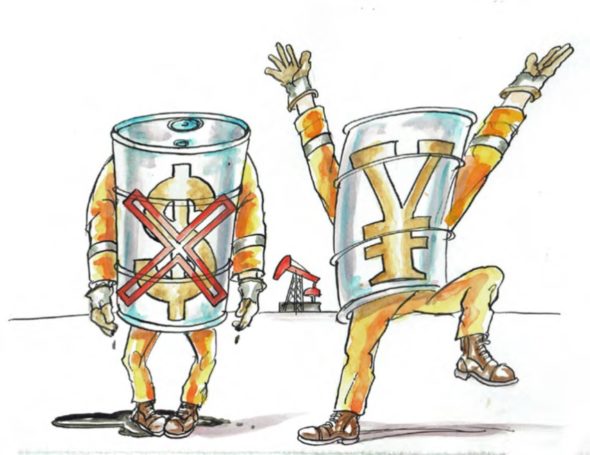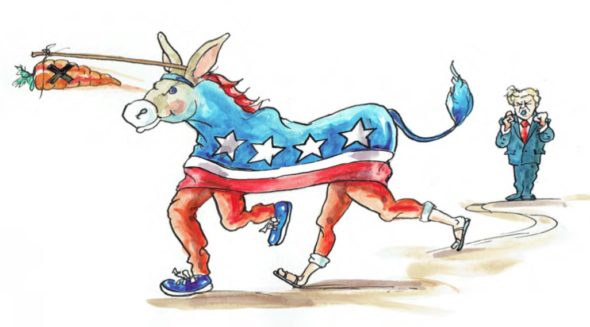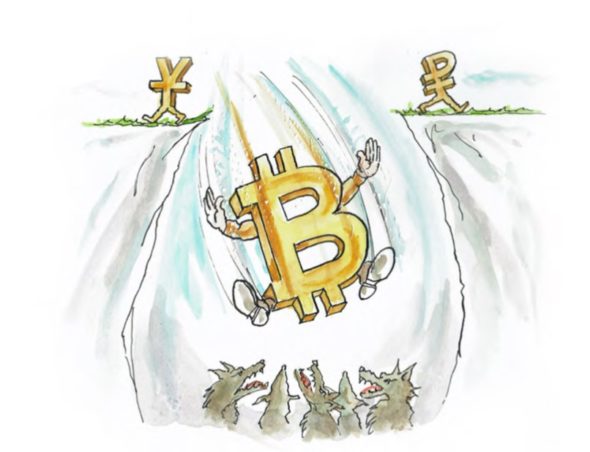Saxo Bank, the online multi-asset trading and investment specialist, has today released its 10 ‘Outrageous Predictions’ for 2018. The predictions focus on a series of unlikely but underappreciated events which, if they were to occur, could send shockwaves across financial markets.
While these predictions do not constitute Saxo’s official market forecasts for 2018, they represent a warning of a potential misallocation of risk among investors who typically see just a one percent likelihood to these events materialising.
Commenting on this year’s Outrageous Predictions, Chief Economist at Saxo Bank, Steen Jakobsen said:
“We have published Outrageous Predictions for more than 10 years and think this year’s list is one of the best we ever had, encouraging everyone to think outside the consensus box. It is important to underline that the Outrageous Predictions should not be considered Saxo’s official market outlook, it is instead the events and market moves deemed outliers with huge potentials for upsetting consensus views.”
Head of FX Strategy, John J. Hardy, who lead the project this year, commented:
“A year ago, many thought 2017 would prove a volatile year, given the seemingly impossible rise of Trump and the shock of Brexit. Instead, we got a year of outrageously smooth sailing that inflated risky assets the world around with nary a storm. But in 2018 we see the pendulum swinging back in favour of pronounced volatility risks as the irony of long periods of quiet and complacency in asset markets is that they sow the seeds for future volatility as investors underestimate tail risks and overleverage their bets on a continuation of the cycle.”
“That being said, our predictions this year aren’t just about market crash concerns. We wax outrageous on everything from major central banks losing their policy mojo and a new political crisis in the EU, to China eroding the US dollar’s reserve currency status and a new political spring welling up in southern Africa. We may or may not get any of these right but that isn’t the point. Rather, our task here is to stimulate debate and thought on what outrageous direction things may head at major inflection points like those that 2018 will inevitably bring. “
The Outrageous Predictions 2018 publication is available here and the full list of Saxo Bank’s Outrageous Predictions for 2018 reads:
1. The Fed loses independence as the US Treasury takes charge
Both the Republicans and Democrats vie for an increased share of the populist vote as we head into 2018 mid-term elections, with budget discipline entirely absent and GOP tax cuts bringing a massive revenue shortfall which will worsen as US heads into recession. The weak economy and the higher interest rates and inflation will leave the Fed with no answer on monetary policy. The Fed becomes a scapegoat for the economy’s weak performance, a bond market in turmoil and worsening inequality. The Treasury takes on emergency powers and forces the central bank to cap US government yields to 2.5% on long bonds to prevent a bond market meltdown, a policy which was last in place in the immediate aftermath of World War II.
2. Bank of Japan forced to abandon yield curve control
The Bank of Japan’s policy of yield curve control depends on soft global interest rates and low yields, and in 2018 this centre will simply not hold. As inflation rises, yields too will spike, and the result will be a fantastical plunge in the yen. Ultimately, the central bank will need to resort to QE-style measures, but not before USDJPY hits 150, after which it rapidly devalues to 100.

3. China rolls out the Petro-Renminbi
China is by far the largest oil importer, and many producer nations are already more than happy to transact in yuan terms. With the US’ global power and reach waning, and given the success of CNY-based commodity futures in general, the Shanghai International Energy Exchange’s decision to launch a yuan-based crude oil future is a runaway success. The introduction of the petro-yuan sees CNY appreciate more than 10% versus the dollar, taking the USDCNY rate below 6.0 for the first time ever.
4. Volatility spikes after flash crash in stock markets
World markets are increasingly full of signs and wonders, and the collapse of volatility seen across asset classes in 2017 was no exception. The historic lows in the VIX and MOVE indices are matched by record highs in stocks and real estate, and the result is a powder keg that is set to blow sky-high as the S&P 500 loses 25% of its value in a rapid, spectacular, one-off move reminiscent of 1987. A whole swathe of short volatility funds are completely wiped out and a formerly unknown long volatility trader realises a 1000% gain and instantly becomes a legend.

5. US voters go hard left in 2018 election
Changing demographics in the US which already has the under-35 millennials in place as a larger cohort than the post-war baby boomers will have a dramatic impact on politics in 2018. The general revulsion of younger voters for Trump’s persona, the widening inequality gap aggravated even further by the Republicans’ cynical tax reform, and a new breed of Democratic candidates who are unafraid to tap into Sanders-style populism from the left sees millennials turning out in droves at the polls in November. The Democrats pull the debate away from tax reform to spending stimulus for the masses. True populism means breaking out the chequebook for the 90%, and that means fiscal stimulus, deficits be damned. US 30-year Treasury yields rip beyond 5%.

6. Austro-Hungarian empire threatens EU takeover
The divide between old core EU members and the more sceptical and newer members of the bloc will widen to an impassable chasm in 2018 and for the first time since 1951, Europe’s political centre of gravity will shift from the Franco-German couple to CEE. The EU’s institutional blockage does not take long to worry financial markets. After spiking to new highs versus the G10 and many EM currencies by late in 2018, the euro rapidly weakens towards parity with USD.

7. Bitcoin is thrown to the wolves
Bitcoin peaks in 2018 above $60,000 and with a market capitalisation of over $1 trillion as the advent of the Bitcoin futures contract in December 2017 leads to a groundswell of involvement by investors and funds that are more comfortable trading futures than tying up funds on cryptocurrency exchanges. Before long, however, the Bitcoin phenomenon finds the rug torn out from under it as Russia and China move deftly to sideline and even prohibit non-sanctioned cryptocurrencies domestically. After its spectacular peak in 2018, Bitcoin crashes and limps into 2019 close to its fundamental “production cost” of $1,000.

8. Southern African Spring sees South Africa blossom
In 2018, after a surprising turn of events, a wave of democratic transition spreads across sub-Saharan Africa. The forced resignation of Zimbabwe’s long-term president Robert Mugabe at the end of 2017 triggers a wave of political change in other African countries. South Africa’s Jacob Zuma is forced out of power and Congo’s Joseph Kabila faces unprecedented demonstrations pushing him to flee the country. South Africa, however, is the main winner as the ZAR becomes the EM darling and returns 30% against the G3 currencies. It brings the world’s strongest rates of growth in South Africa and satellite frontier economies of the region.

9. Tencent topples Apple as market cap king
China, still the world’s most populous country and one with a rapidly rising standard of living, is opening up its capital markets and its reform programmes are driving a rise in investor sentiment. This is particularly evident in Chinese technology stocks with market leader Tencent’s shares rocketing 120% higher in 2017. In late 2017, Tencent moved into the global top five in market cap terms, nearing $500 billion and even eclipsing Facebook at one point. In 2018, though, Tencent leaves the other giants in the dust with its shares advancing another 100% despite the company’s already enormous size , stealing the world market cap crown from Apple at well above $1 trillion.

10. It’s their time – women crash the glass ceiling
Over the last generation, women have started achieving higher education levels than men, with US universities now graduating some 50% more women than men at the bachelor’s degree level. Women also now comprise nearly half of all business graduates. And yet in 2017, only 6.4% of the CEOs in the Fortune 500 list are women – though on average they earn more than their male peers.
Change is coming – not because it is “fair”, but for the practical reason that women realising their desired potential is the last way left to grow the pie without growing the population in our low-productivity and aging developed economies. In 2018, the chauvinist old boys’ clubs are shaken to their core by shareholders and a woman occupies the top spot at more than 60 Fortune 500 companies by the end of the year.
To access the full publication of Outrageous Predictions for 2018 please go to the Saxo Bank website: https://www.home.saxo/campaigns/outrageous-predictions-2018
